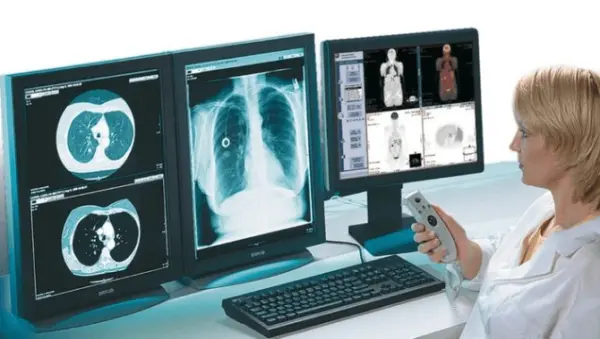“How to become a radiologist technician: Steps, Training, and FAQs”


Contents [show]
Introduction
How to become a radiologist technician? Radiologic technologists, often referred to as radiology technicians, play a vital role in the field of healthcare. They are responsible for operating medical imaging equipment, such as X-rays and CT scanners, to create images that help diagnose and treat medical conditions. If you’re interested in pursuing a career as a radiologic technologist, this guide will provide you with the steps, training requirements, and answers to frequently asked questions (FAQs) to help you navigate the path to becoming a radiologic technologist.
Understanding the Role of a Radiologic Technologist
How to become a radiologist technician? Radiologic technologists are trained professionals who perform a variety of essential duties, including:
- Operating imaging equipment to create diagnostic images of the body.
- Ensuring patient safety and comfort during imaging procedures.
- Collaborating with physicians to interpret images and make accurate diagnoses.
- Maintaining and calibrating radiology equipment to ensure accurate results.
How to Become a Radiologic Technologist
How to become a radiologist technician? Becoming a radiologic technologist involves several key steps:
1. Educational Prerequisites
To start your journey, you’ll need a high school diploma or equivalent. Having a strong foundation in science and math can be beneficial.
2. Obtain an Associate’s or Bachelor’s Degree
Most aspiring radiologic technologists pursue an associate’s degree in radiologic technology, which typically takes two years to complete. Some universities also offer bachelor’s degree programs in radiologic sciences, which may provide additional opportunities for specialization and advancement.
3. Accredited Radiologic Technology Program
Enroll in a program accredited by the Joint Review Committee on Education in Radiologic Technology (JRCERT) or a similar accrediting body. These programs provide the necessary education and clinical training.
4. Clinical Experience
As part of your education, you’ll complete clinical rotations at healthcare facilities, where you’ll gain hands-on experience in conducting imaging procedures and working with patients.
5. Certification
Upon graduation, you’ll be eligible to take the certification exam from the American Registry of Radiologic Technologists (ARRT) or an equivalent certifying body. Passing this exam is essential for becoming a registered radiologic technologist.
Read also https://mattbrogi.com/world-news/
6. Licensure
In some states, radiologic technologists are required to obtain state licensure in addition to national certification. Make sure to check the specific licensing requirements in your state.
FAQs About Becoming a Radiologic Technologist
Q1: How long does it take to become a radiologic technologist?
A: The time required to become a radiologic technologist typically ranges from 2 to 4 years, depending on the degree level pursued (associate’s or bachelor’s) and whether additional certifications or specializations are sought.
Q2: How to become a radiologist technician?
A: The salary for radiologic technologists varies by location and experience but is generally competitive. As of my knowledge cutoff date in 2022, the median annual wage was around $63,710 in the United States.
Q3: Are there opportunities for specialization in radiologic technology?
A: Yes, radiologic technologists can pursue specialization in areas such as computed tomography (CT), magnetic resonance imaging (MRI), mammography, and nuclear medicine, among others.
Q4: What are the job prospects for radiologic technologists?
A: Job prospects for radiologic technologists are generally positive, with demand expected to grow due to an aging population and the need for diagnostic imaging. Hospitals, clinics, and imaging centers are common employers.
Q5: Is continuing education required for radiologic technologists?
A: Yes, radiologic technologists are typically required to complete continuing education to maintain their certification and licensure. This ensures that they stay up-to-date with the latest technology and best practices in the field.
Conclusion
How to become a radiologist technician? Becoming a radiologic technologist is a rewarding and essential career path in the healthcare industry. These professionals are instrumental in the diagnosis and treatment of various medical conditions, making a positive impact on patient care. By following the steps outlined in this guide, pursuing the necessary education and training, and obtaining certification, you can embark on a fulfilling career as a radiologic technologist. If you have further questions or seek more detailed information, don’t hesitate to reach out to educational institutions and professional organizations in the field for guidance and support.





